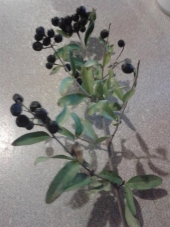




 1
1




 1
1




 1
1




"People may doubt what you say, but they will believe what you do."

 2
2




List of Bryant RedHawk's Epic Soil Series Threads We love visitors, that's why we live in a secluded cabin deep in the woods. "Buzzard's Roost (Asnikiye Heca) Farm." Promoting permaculture to save our planet.




Bryant RedHawk wrote: I use 4" pipe in 2 foot sections




Jerome Lee wrote:To be clear, with those methods, I wouldn't do any processing of the seeds, right? (no water soaking, no filing seeds?)
Also, what is the main purpose of the greenhouse (cold frame or aquarium designs alike)? Is it mostly for increased warmth during the spring? Pest/weeds/humidity control?
Bryant RedHawk wrote: I use 4" pipe in 2 foot sections
That's 4" diameter and 2 foot tall? Why so tall? Do seedlings need that much depth?
Thank you all very much, I really appreciate.
"People may doubt what you say, but they will believe what you do."
















List of Bryant RedHawk's Epic Soil Series Threads We love visitors, that's why we live in a secluded cabin deep in the woods. "Buzzard's Roost (Asnikiye Heca) Farm." Promoting permaculture to save our planet.




Bryant RedHawk wrote:
In the beginning stages of a tree's growth, wind is an enemy, later turning into a friend, the greenhouse, cold frame or high tunnel functions as a wind break, a heat retainer, light multiplier.
Redhawk
"People may doubt what you say, but they will believe what you do."
















List of Bryant RedHawk's Epic Soil Series Threads We love visitors, that's why we live in a secluded cabin deep in the woods. "Buzzard's Roost (Asnikiye Heca) Farm." Promoting permaculture to save our planet.








Jerome Lee wrote:Todd paints his aquarium to block some of the light, is that something I should do for a cold frame, or is that not much of a concern?
"People may doubt what you say, but they will believe what you do."




















List of Bryant RedHawk's Epic Soil Series Threads We love visitors, that's why we live in a secluded cabin deep in the woods. "Buzzard's Roost (Asnikiye Heca) Farm." Promoting permaculture to save our planet.









Works at a residential alternative high school in the Himalayas SECMOL.org . "Back home" is Cape Cod, E Coast USA.




























List of Bryant RedHawk's Epic Soil Series Threads We love visitors, that's why we live in a secluded cabin deep in the woods. "Buzzard's Roost (Asnikiye Heca) Farm." Promoting permaculture to save our planet.

|
Of course, I found a very beautiful couch. Definitely. And this tiny ad:
The new purple deck of permaculture playing cards
https://www.kickstarter.com/projects/paulwheaton/garden-cards
|




